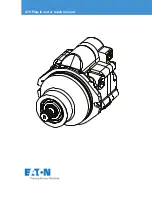
Merlin
Instruction manual V1.4
Pag:
17
Stick position
MODE
0% (Idle)
25%
50%
75%
100%
FULL EXPO
Idle thrust
6%
25%
56%
100%
% of total
thrust
HALF EXPO
Idle thrust
16%
38%
66%
100%
LINEAR
Idle thrust
25%
50%
75%
100%
Throttle curves can be changed while the engine running, so you can leave the throttle at a given position
and switch between the curves to see the difference.
Acceleration and deceleration settings.
Under the “RUN” menus is possible to change the acceleration and deceleration times. The engine is
supplied and tested from factory ready to use and usually these settings should be correct for normal use.
However the user can modify these default settings to allow the engine to run optimally in different
conditions.
Leave the acceleration and deceleration in “fast” mode when using the engine with kerosene and at ambient
temperatures below 25ºC and elevation below 500m.
If diesel fuel is used, or ambient temperature is over 25ºC or altitude is over 500m, then the engine could
experiment difficulties in accelerating. In these cases, try to set the acceleration to “normal”, “slow” or
“very slow” to find a setting where the engine operate normally. It is much better to have an engine than
respond slower to throttle changes than one that just stop when asked to accelerate faster than possible in
difficult ambient conditions!
Exhaust tubes.
The size and placement of the exhaust tube is not an exact science. The optimum tube diameter and the
gap between the engine exhaust and the tube intake is largely dependent of the airframe. An slow airframe
with big intakes will benefit of larger exhaust diameter and larger gap, to get the maximum static thrust
possible, while a fast airframe, with small intakes, bypass installation, will benefit of smaller exhaust
diameter and smaller gap, to get the maximum efflux speed.
As a general guideline, use an exhaust tube of a diameter equal or larger than the specified in page 5, with
a gap between the engine exhaust and beginning of exhaust tube (excluding the bell mouth) of 25mm. later
you can experiment moving the engine 5mm forward or aft to see if performance is better. Too larger gap
will cause hot gases to recirculate to the engine intake, decreasing performance and worsening the
acceleration. Too short gap will cause extra pipe noise and depression inside the pipe, in extreme cases the
exhaust tube can collapse due the low pressure inside (venture effect).
Use in gliders and in 3D planes.
If you plan to use your engine in a glider, please consider to de-rate your engine. The typical use that is
running at full power continuously for the entire flight in airframes that easily weight 4 times the engine
thrust is very hard for the engine, as the internal elements like combustion chamber are subjected to
maximum temperature and stress all the time, reducing the time between overhauls. We would
recommend using the engine at 80% of its maximum power in these conditions, or using the 100% for
takeoff, but later reducing to 80% during continuous climb.
We don’t recommend using our engines in 3D planes doing fast acrobatics. The gyroscopic forces that an
turbine rotor turning at +100.000RPM apply to the bearings doing a loop in less than 1s are extremely high
and can destroy the bearings or cause the compressor or turbine wheels to rub to the engine case.







































